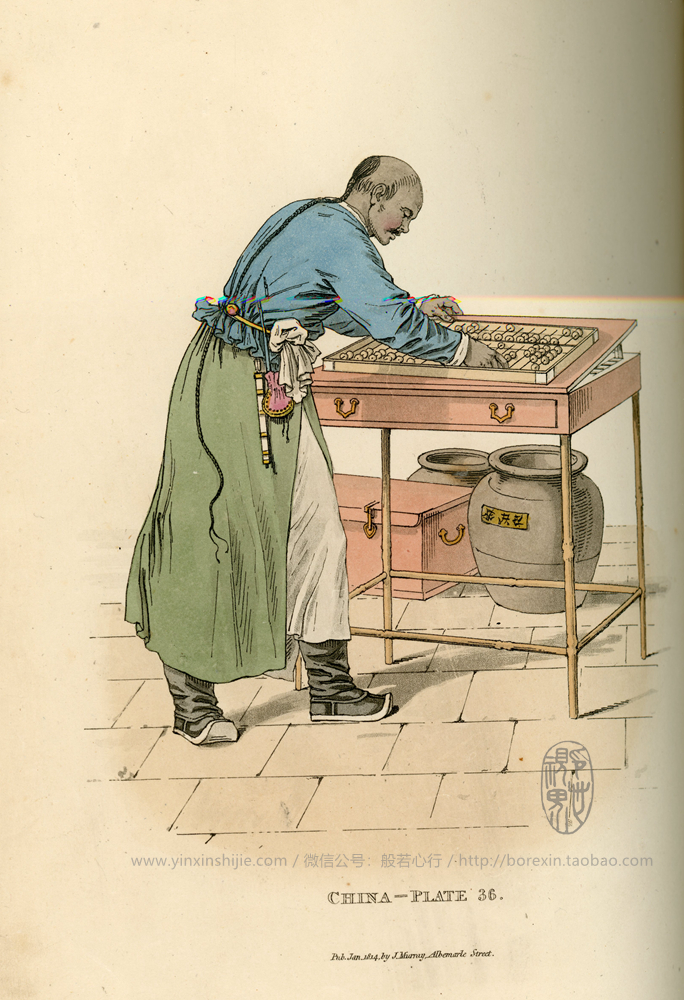【老书】 用算盘算账的商人-《中国人的服饰和习俗图鉴》(1814年出版)

▲用算盘算账的商人-《中国人的服饰和习俗图鉴》(1814年)
英文备注译文:
中国的商人和商人是最专业、最善于算账的;但他们机械地执行所有算珠运算,通过一个分为两个隔间的框格,通过该框格传递;在这些横格上,一个横格杆里挂着五个算珠,另一个横格杆里挂着两个可移动的算珠。这一原理与罗马人的算盘原理类似,在俄罗斯仍在使用。据观察,在广州称几千箱茶叶或几包货物时,中国会计总是能在欧洲人还没来得及算账之前就说出总数。
英文原文:
The Chinese merchants and tradesmen are most expert and ready reckoner ; but they perform all arithmetical operations mechanically , by means of a table divided into two compartments , through which pass iron wires ; and on these wires are strung in one compartment five , and in the other , two moveable balls . The principle is something of the same kind as that of the abacus of the Romans, and is with some little variation still made use of in Russia . It has been observed , that in weighing several thousand chests of tea , or bales of goods , at Canton , the Chinese accountant can invariably name the sum total long before the European can cast up his account.
威廉·亚历山大(William Alexander,1767~1816)英国画家。
生于英国肯特郡,父亲是英国坎特美斯顿城马车画匠。
自小受到父亲的熏陶,对绘画产生浓厚兴趣。
15岁时随父亲到伦敦,他于1784年入皇家学院学画,一直学到1792年。易卜逊对其才能倍加赞赏,把他推荐给马戛尔尼勋爵。
他在伦敦皇家艺术学会展览并出版画册和书刊,出版彩色的《中国服饰》及《中国衣冠举止图解》(Picturesque Representations of the Dress and Manners of the Chinese 1814)两书,介绍中国风光,使英国和欧洲人民对中国有了形象的认识,促进西方对中国的了解。
在澳门期间,他画了一幅题为《从外海眺望澳门景色》的水彩画,描绘了18世纪澳门城市风貌。同时也显示了英国对于澳门的觊觎,成为澳门历史和中英关系的重要佐证。
1808年,转任大英博物馆的印刷画及素描画管理员,直至去世。
长按下面识别二维码
如有疑问或想了解更多,请加微信:



 关注官方微信
关注官方微信
